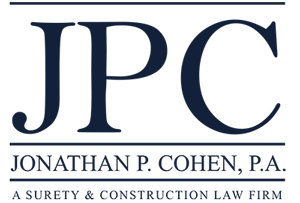The information provided in this article does not, and is not intended to, constitute legal advice.
The content in this article is available for general informational purposes only.
This article was featured in Fidelity & Surety Law Committee News (Spring 2019) page 9. To view/download the original article click here.
What follows is a common scenario: The plaintiff is a general contractor suing your client, an electrician. The general contractor claims your client delayed the project by 222 days. The general contractor is also claiming other subcontractors have delayed the project. However, the general contractor did not perform a critical path analysis and also failed to adhere to its own schedules. Can the general contractor successfully obtain compensation for delay damages against the electrician without having performed a critical path analysis? This article presents an overview of the different methodologies for conducting critical path analyses for the purpose of quantifying compensable delay damages.
Generally speaking, damages are an attempt by one party to place a monetary value on the harm suffered as a result of another party’s action or inaction, and, in the construction industry, damages due to delay are common and remain extensively litigated through the use of scheduling experts. A construction delay is the failure to complete an individual project activity within the time allotted and results from occurrences that affect the critical path, such as weather, owner issues, late or incomplete material deliveries, and labor problems or inefficiencies. Proving that a delay extended the overall project duration, proving that the delay is compensable, and identifying which party bears the sole responsibility for the delay is a complex process, often accomplished through a critical path method analysis.1
To ensure a practitioner’s ability to competently discuss strategy and tactics with his or her expert or client, it is important to understand the pros and cons of the different CPM methodologies and the level of recognition or preference the courts have given each methodology. This article will provide the practitioner with pointers to discuss with a scheduling expert so a collaborative decision can be made as to which methodology is appropriate for the case at hand.
What is the Critical Path Method?
CPM was developed in the late 1950s as a joint venture between the DuPont Chemical Company and computer firm Remington Rand Univac. DuPont and Remington wanted a way to tackle the correlation of individual activities that make up a project schedule.2 Over the last sixty years, CPM methodologies have been developed to aid in determining the cause and extent of delay to assist in resolving construction disputes. In all the methodologies, the critical path is defined as the longest sequence of required construction activities to complete the project, and, as such, any delay to an activity on the critical path will extend the overall duration of the project.3 Delay to items that are not on the critical path are said to contain “float” or “slack;” they do not affect the overall project duration and cannot be the basis for delay damages. However, float can be used up, and, once a non-critical path activity is delayed by more than its available float time, it becomes a critical path delay.
CPM analysis is used in pre-construction and post-construction scheduling analyses. In the pre-construction phase, CPM is used to plan project sequencing. In the post-construction phase, CPM analysis is used forensically to determine not only what activity caused the delay but also the amount of compensable delay to support financial damages calculations.
One of the first cases to rely on CPM as evidence in a construction dispute was Haney v. United States.4 The court described CPM analysis as follows:
Essentially, the critical path method is an efficient way of organizing and scheduling a complex project which consists of numerous interrelated separate small projects. Each subproject is identified and classified as to the duration and precedence of the work. (E.g., one could not carpet an area until the flooring is down and the flooring cannot be completed until the underlying electrical and telephone conduits are installed.) The data is then analyzed, usually by computer, to determine the most efficient schedule for the entire project. Many subprojects may be performed at any time within a given period without any effect on the completion of the entire project. However, some items of work are given no leeway and must be performed on schedule; otherwise, the entire project will be delayed. These latter items of work are on the “critical path.” A delay, or acceleration, of work along the critical path will affect the entire project.
